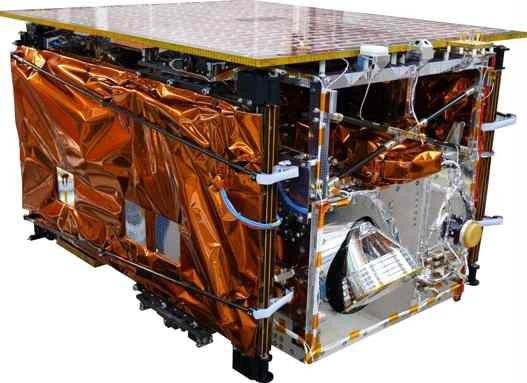- California Assembly OKs highest minimum wage in nation
- S. Korea unveils first graphic cigarette warnings
- US joins with South Korea, Japan in bid to deter North Korea
- LPGA golfer Chun In-gee finally back in action
- S. Korea won’t be top seed in final World Cup qualification round
- US men’s soccer misses 2nd straight Olympics
- US back on track in qualifying with 4-0 win over Guatemala
- High-intensity workout injuries spawn cottage industry
- CDC expands range of Zika mosquitoes into parts of Northeast
- Who knew? ‘The Walking Dead’ is helping families connect
Nuri’s main payload NEXTSAT-2 enters orbit, makes communication with Earth
South Korea’s main satellite has successfully entered orbit and made multiple communications with ground stations, the science ministry said Friday.
NEXTSAT-2 was deployed from South Korea’s homegrown space rocket Nuri on Thursday evening, followed by seven microsatellites at 20 second intervals.
Korea’s King Sejong Station in Antarctica received the first signal from NEXTSAT-2 at 7:07 p.m. Thursday and a ground station in South Korea’s central city of Daejeon also communicated with the satellite some 50 minutes later, according to the Ministry of Science and ICT.

NEXTSAT-2 also made two-way communications seven times with the Daejeon station and other overseas posts earlier Friday, the ministry said.
All of the satellite’s operational functions, including power generation and data processing, are working well, it added.
NEXTSAT-2 — the 180-kilogram satellite designed and developed by the Korea Advanced Institute of Science and Technology (KAIST) — will demonstrate X-band radar technology and measure space radiation on a dawn-dusk orbit for the next two years.

The ministry said two of the four microsatellites developed by the Korea Astronomy and Space Science Institute, codenamed SNIPE, have made communications with ground stations since they were put into space last night.
The ministry earlier confirmed that three of the four SNIPE satellites were deployed from Nuri, saying the final one’s status remains unknown.
Two of the three others — the JAC by the Korean engineering company Justek Inc., the LUMIR-T1 by the local space firm Lumir Inc. and the KSAT3U by startup Kairospace Co. — have corresponded with ground stations.
The ministry said it will make constant efforts to make contact with the three satellites that remain silent.








![일본 사도광산 [서경덕 교수 제공. 재판매 및 DB 금지]](http://www.koreatimesus.com/wp-content/uploads/2024/07/PYH2024072610800050400_P4-copy-120x134.jpg)


